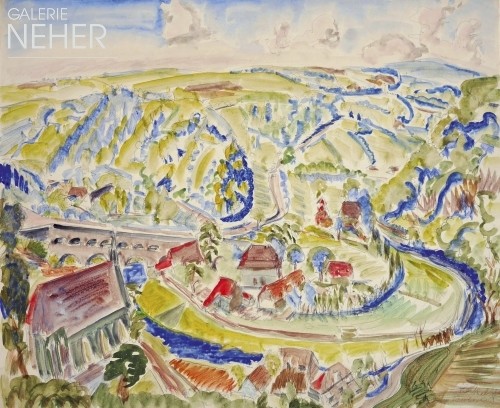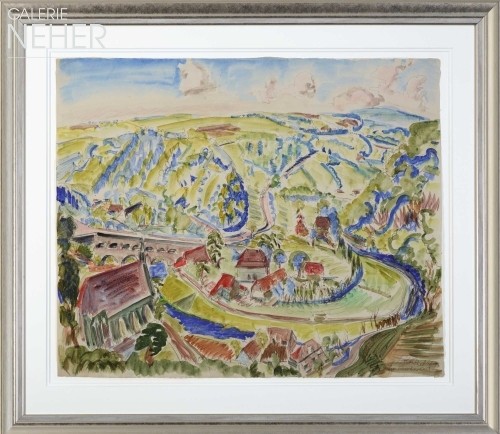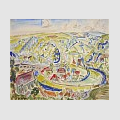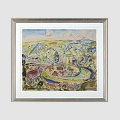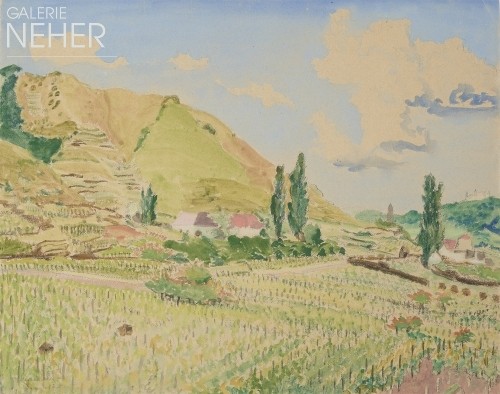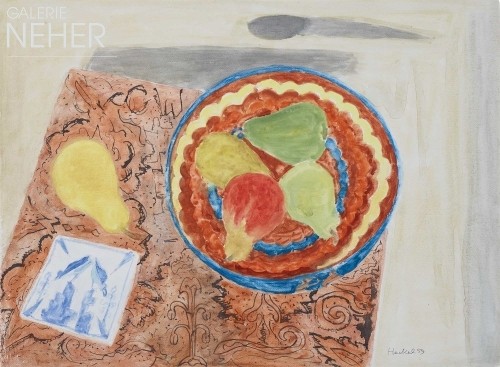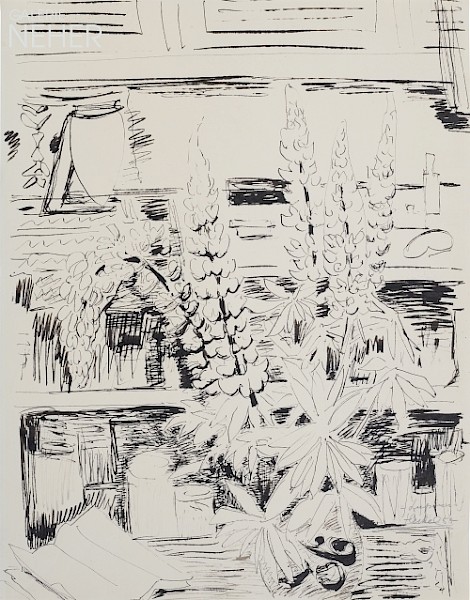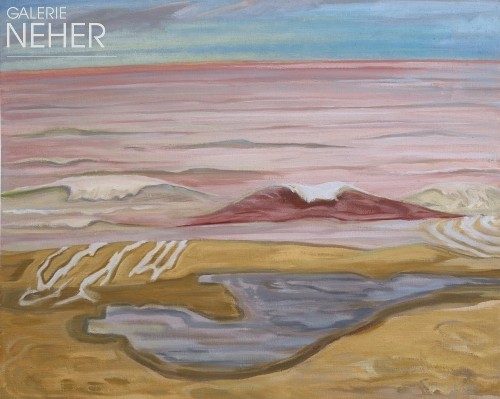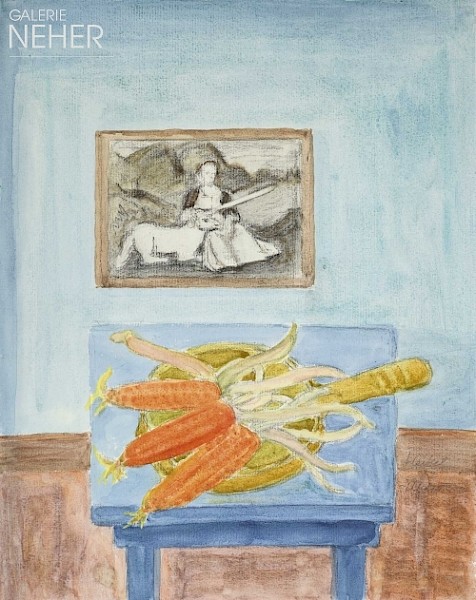Erich Heckel - Im Taubertal (In the Tauber Valley), 1927
Watercolour over pencil on paper
56 x 68 cm / framed 77 x 88 cm
22 x 26 inch / framed 30 x 34 inch
signed, titled: “Heckel Im Taubertal”
N 9454 
Erich Heckel - Im Taubertal (In the Tauber Valley), 1927
Watercolour over pencil on paper
56 x 68 cm / framed 77 x 88 cm
22 x 26 inch / framed 30 x 34 inch
signed, titled: “Heckel Im Taubertal”
N 9454 
About the work
Erich Heckel travelled through many landscapes, climbed many mountains and spent many hours on the coast over the course of his life. While he resided in Berlin in the winter months, spring was dedicated to working travel, the summer usually to a stay in the Flensburg Fjord, where the Heckel couple had acquired a farmhouse with agricultural operations located on the cliff coast in 1919.
In the spring of 1927, the artist and his wife Siddi travelled to Franconia on the Main and Neckar Rivers, where they were for a time guests at the estate of the painter Gertraud Rostosky in Würzburg, who maintained a worldly house. The colourful watercolour entitled Im Taubertal (In the Tauber Valley) also apparently originated during this trip. Seen from Rothenburg, the gaze of the painter falls on the gentle valley with its surrounding vineyards and the small Tauber River, which follows its meandering course through the hilly landscape. In the left part of the painting, the bridge over the Tauber, which was erected in the14th century, with its two rows of arches on top of one another, and the little Kobolzeller church are recognisable. At the centre of the sheet is the historic Herrenmühle (a mill) with its characteristic mansard roof and its barns and auxiliary buildings.
While the city and natural landscape are on the one hand depicted exactly, Heckel on the other hand lent his representation a vital expressiveness through the planar staggering of the pictorial space and the inherent value of the paint, which sets the painting in motion and causes it to vibrate. It is this successful linking of precise topography and painterly freedom that lends the watercolour its exceptional quality.
Text authored and provided by Dr. Doris Hansmann, Art historian
Studies of art history, theater, film and television, English and Romance Languages at the University of Cologne, doctorated in 1994. Research assistant at the Art Museum Düsseldorf. Lecturer and project manager at Wienand Verlag, Cologne. Freelance work as an author, editor and book producer for publishers and museums in Germany and abroad. From 2011 chief editor at Wienand Verlag, from 2019 to 2021 senior editor at DCV, Dr. Cantz’sche Verlagsgesellschaft, Berlin. Numerous publications on the art of the 20th and 21st centuries.
